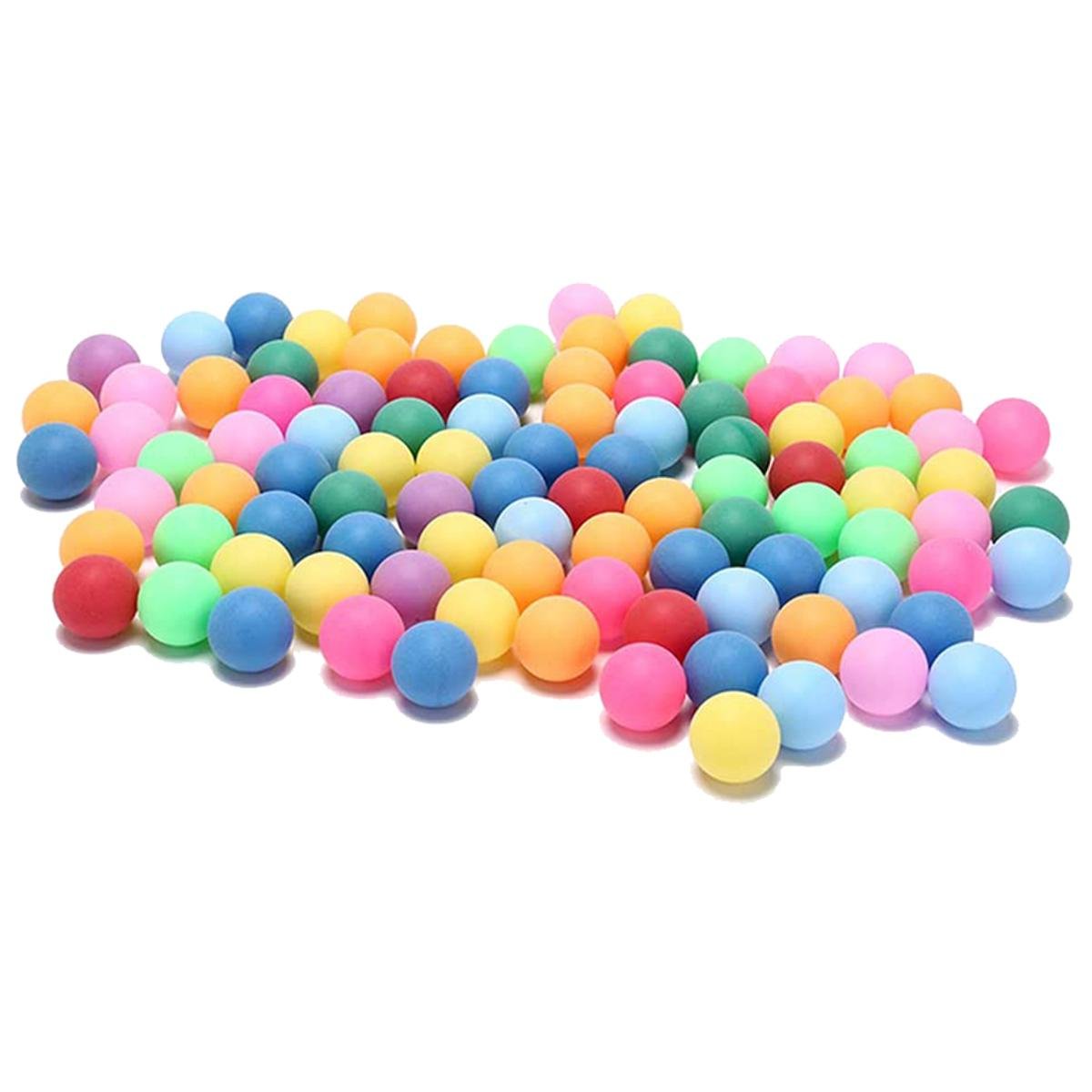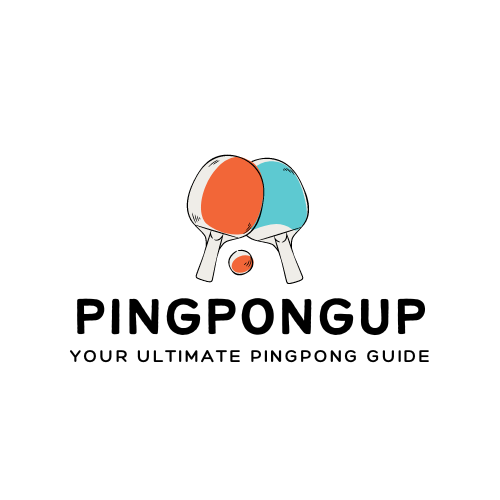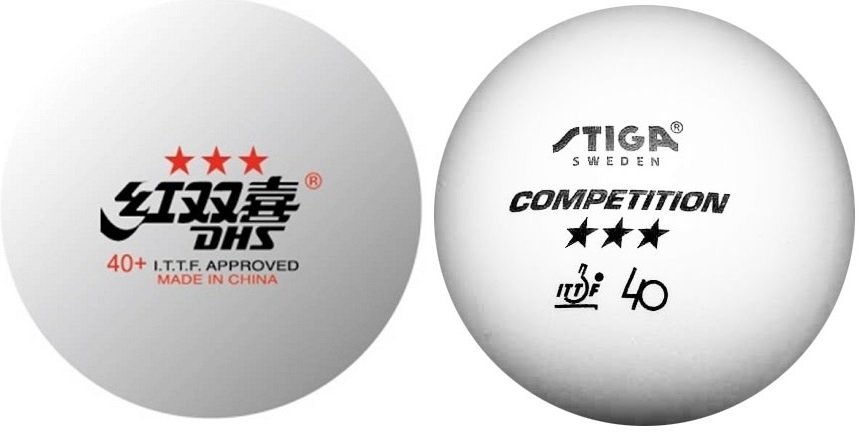Ping pong balls are made from several materials, but the most common ones are polyurethane and rubber. Here’s a look at each of these materials and what makes them perfect for ping pong balls. Do they also discuss What are ping pong balls are made of?
These table tennis balls are made of cellulose acetate and coated with hard, smooth plastic. The cellulose acetate is what gives ping pong balls their bouncy bounce and makes them tough enough to stand up to regular use.
Due to the plastic coating on the ping pong balls, they are more resistant to wear and tear, making them last longer. The rubber is vulcanized, which is a process in which the rubber is heated and then formed into small hardened pieces.
Types of Ping Pong Ball Plastics
-
Celluloid
The ping pong balls are made of celluloid, which is a type of material that is commonly used in the making of movies. Celluloid is a type of plastic made from the oil and gas residues left over from petroleum production. Also, read the How to Replace Table Tennis Rubber?
However, this is a very strong material, and it can be used to make products that are difficult to make with other types of plastic. For example, ping pong balls are often celluloid because they are harder to break than other balls.
-
A.B.S. Plastic
This type of plastic is commonly used in ping pong balls. A.B.S. plastic is a type of plastic that is made from polybutadiene and butadiene-styrene. These ingredients are mixed and heated until the polybutadiene molecules form long chains. You Can Also check the How to Play Table Tennis Double?
After cooling, these chains are cut into pieces. The small pieces of A.B.S. plastics are then shaped into balls and coated with a vinyl acetate polymer. This coating helps to make the balls impervious to water and oil.
Ping pong balls made from A.B.S. plastic is resistant to U.V. light, making them ideal for outdoor games. They also have high impact resistance, making them good for playing collision sports such as basketball and football.
-
Nylon
It is a synthetic thermoplastic polymer made in a laboratory. The plastic is used to make ping pong balls. The material is robust and long-lasting, and it is a material that cannot be worn away.
Unlike other materials, nylon ping-pong Balls do not bounce as well as other materials. Moreover, if they break, they can also be potentially dangerous.
-
Fluorine rubber
F.K.M. or Viton is a type of synthetic rubber containing fluorine. It is used in a wide range of plastic-made products. It is known for resisting chemicals, oils, and high temperatures.
Ping-pong balls made of fluorine rubber were once used in table tennis. After some time, they were replaced by other materials since they did not bounce as well as they used to.
-
Polystyrene
Polystyrene is made from the monomer styrene. It is a synthetic aromatic polymer. It is a clear plastic that can withstand being hit and is often used to make things like Styrofoam cups, packaging, and insulation. Once, all ping pong balls were made of polystyrene. But polyethylene terephthalate (P.E.T.) balls have mostly taken their place because they are stronger and last longer.
-
Polyethylene Terephthalate (P.E.T.) (P.E.T.E)
Polyethylene terephthalate, also called P.E.T. Or P.E.T.E., is a robust and lightweight plastic used in many products. It is often used to package food, drinks, electronics, and other products. P.E.T. ping-pong balls are the standard in the market right now. They are made of a strong and light material called a thermoplastic polymer. They also don’t break as easily as polystyrene balls, which makes them safer to use.
What is a tennis ball made of?
Official tennis balls have an outer layer of felt and an inner layer of rubber composite. The ball can have a diameter between 2.57 inches and 2.70 inches and a mass between 1.98 ounces and 2.10 ounces. Weight ranges from 1.98 ounces to 2.10 ounces.
What Are Ping Pong Balls Made of?
Ping Pong balls are made of various materials, each with unique properties that make it perfect for the game of ping pong. Ping pong balls are usually made from rubber but can also be made from plastic or wood. Ping Pong balls are usually around 1.5 inches in diameter and weigh around 2 grams. Also, check the How to Fix a Ping Pong Ball?

Colorful Ping Pong Balls:
Even though most ping-pong balls are white, some are not. Many companies make ping-pong balls in different colors for fun. Colorful ping-pong balls can make the game fun and help you find the ball if it goes flying off the table.

Training Ping Pong Balls
The goal of training ping-pong balls is to help you get better at the game. Most of the time, they are heavier and bounce less than regular ping-pong balls. This makes you hit the ball with more force, which helps you get a stronger stroke. Also, check the Table Tennis Footwork.
How are ping pong balls made?
It is important to know how ping pong balls are made as well as their history. Does this article describe each and everything about what Ping Pong Balls Made Of?
Let’s start by following the seven-step plan.

The Manufacturing Process of a Ping Pong Ball
Ping Pong balls are typically made from at least 61% plastic and often contain other materials, including rubber and sponge. The manufacturing process of a ping pong ball begins with the injection molding of the core material.
This is followed by the injection of the cover material, which creates the smooth exterior of the ball. After that, various processes are used to add color, texture, and logos.
-
Weighing
The first step in making a ping-pong ball is to cut small plastic sheets in half, just like a sheet of paper. For consistency, it takes two plastic sheets to make one ping-pong ball, even though one sheet is enough to make half the ball. The sheets of plastic are then weighed before they are formed.
-
Shaping
Making ping pong balls begins with two weighted plastic sheets placed inside a mold, and then a round copper head presses the plastic sheet into the shape of the other half of the ball. During the shaping process, hot water is put on the sheets to prevent them from breaking.
-
Cutting the edges
After shaping, the halves of the ping pong balls start to resemble ping pong balls, but there is still work to be done. The edges of each half must be cut off and taken away. A machine does this job.
-
Gluing
It is now possible to connect the two parts of the ball. Machines and people are working together to make this happen. The balls are placed in large containers after they dry and then taken to a large hall where they will stay for 15 days at a temperature of 45-50°C.
-
Checking the Quality
It is necessary to inspect the ping-pong balls for quality after 15 days. First, automated quality control processes all balls. Those that pass are then looked at by hand. Manual quality control has five steps, which are as follows:
- A solid light inspects the ball’s seam and surface.
- The veer of the balls is verified by rolling the ball down a table with line-markings. To be approved, the ball must go through a tiny gap. This guarantees that the ball is level from all sides and ensures fairness in play.
- A machine measures the ball’s hardness. Different hardness classifications are created for each ball after it has been determined.
- The weighing of the ball is the fourth phase in the process. A ball must weigh between 2.68g and 2.76g to pass and fall within that range.
- The roundness of the ball is the final stage. A special machine measures the ball’s thickness to ensure it is within the required range of 40.00mm to 40.40mm.
-
Logo Printing
Now it’s time to put the logo on! Depending on what the Manufacturer wants, the ball will have its logo on it. Human resource management handles it automatically.
-
Packaging
We have completed the manufacturing process for ping pong balls. All that remains is to package and ship the balls. If you believe it, D.H.S. can pack and ship 600,000 ping-pong balls every Day, which is more than 200 million per year. Also, read the Ping Pong Table Dimensions.
Machines do the whole process of packaging. Making a ping pong ball is hard to imagine. It takes time and care to make ping pong balls, but if you think about it, ping pong balls must be round and fit the players perfectly.
What are the Benefits of Playing Ping Pong?
Playing ping pong is a great way to exercise your body and mind. Rubber, plastic, and aluminum are used in ping pong balls. The type of ball you choose can affect how the game is played. Here are three benefits to playing ping pong with different balls:
- Ping pong with a rubber ball is good for exercise because it requires players to use their arm and shoulder muscles.
- Plastic balls are great for children because they are easy to control and don’t bounce too high.
- Aluminum ping pong balls are good for adults because they are hard to hit and don’t rebound much.
Effects of Plastic Balls on Ping Pong
It significantly affected the game and players when playing ping pong with plastic balls. Ping pong balls of plastic bounce higher than those of celluloid in a rally. They also move faster, but it’s hard to spin them. Even though the change didn’t make any significant difference in their lives,
Especially in fast-paced attack games, players have benefited from ping-pong balls. Because the ball goes high, you don’t need to know how to spin it well to win a quick match. These players hit the ball right after it bounces, before reaching its highest point. Because of this, these athletes have to do less work.
The game is moving faster now, so players must be more athletic to keep up. Some athletes may have trouble with this change, but others will do well. You Can Also check the How To Seal Your Table Tennis Blade?
With these balls, you can make powerful shots that may be hard to return. Also, unlike celluloid balls, these make a clear and satisfying “clack” sound. The main difference is that plastic has a more rigid surface, making it stronger and lasting longer. Because of this, you can be sure it will last longer and work well in every game.
The player gets to choose which ping-pong balls to use. Use plastic if you want a fast-paced game that requires less work. Use celluloid if you wish for a more complex and technical competition. In the end, it all comes down to what you like!
Some players have problems adapting to the material. Backspin defenders had trouble with this material because it wasn’t scanable.



